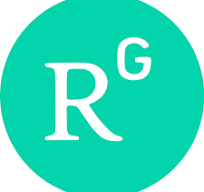Internet of Things: Applications and Challenges at Higher Learning Institutions
DOI:
https://doi.org/10.47577/ijitss.v1i.7Keywords:
Mixing problems , Laplace transform , A techniqueAbstract
The Internet of Things (IoT) is an inovative system where internet is connected to the physical world via ubiquitous sensors and is rapidly making its way into higher learning institutions. By modifying how higher institutions gather data, interface with students and automate processes, the IoT has the potential of revolutionizing education. Universities may offer opportunities to magnify content delivery, augment learner and faculty interaction when IoT devices are utilized. Massive open online courses, online software application and education applications make students co-creators and active individuals in acquiring their knowledge and experience. However, many challenges such as Malware, Distributed Denial of Service, data storage, data security, privacy, decentralized network management and connectivity come along with the use of internet:. This conceptual paper offers suggestions to overcome these challenges to address future threats to IoT and provides directions for future research.
Downloads
Downloads
Published
How to Cite
Issue
Section
License
Copyright (c) 2021 TechHub Journal

This work is licensed under a Creative Commons Attribution-NonCommercial-NoDerivatives 4.0 International License.
All Right Reserved. Copyright © 2020
All articles are published under the terms of the Creative Commons Attribution License (CC-BY). This license permits unrestricted use, distribution, and reproduction provided that the authors, citation details and publisher are clearly identified. For any reuse or distribution, users must make clear that the article is made available under a Creative Commons Attribution license.
If an article is accepted for publication in IJITSS journal, authors will be asked to submit a copyright form through the Open Journal System. Copyright Transfer Form. This transfer will ensure the widest possible dissemination of information. A notification will be sent to the corresponding Author confirming receipt of the manuscript. It is the author's responsibility to ensure that his or her submitted work does not infringe any existing copyright. Authors should obtain permission to reproduce or adapt copyrighted material and provide evidence of approval upon submitting the final version of a manuscript.












